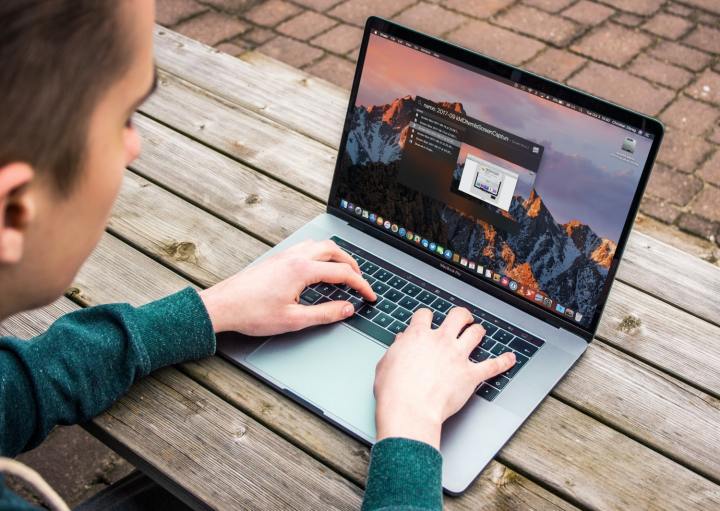Rumors that Apple is making a touchscreen Mac are about as old as the Steve Jobs adage that touchscreen laptops suck and make your arm ache. But a fresh patent shows Apple is still working on the idea — and this time the company might have finally perfected it.
As spotted by Patently Apple, the patent describes how a touchscreen Mac could incorporate haptic feedback into its display. That means you could get small tactile taps every time you press on the screen, which would subtly let you know that your actions have been recognized.

Apple also explains how the lower portion of a laptop — that is, the area containing the keyboard and trackpad — could also be outfitted with a haptic display. This display might be used to conjure up a virtual keyboard that could change its layout on the fly, an idea Apple has been tinkering with for years.
The patent also notes that the haptic system could detect varying degrees of force. This could provide different levels of response depending on how hard you press (something that you already get with the suitably named Force Touch trackpad in the latest MacBooks).
It’s not a well-known fact, but Apple devices already come with haptic touchscreens. Modern iPhones can enable haptic feedback, something that can greatly enhance the typing experience. If Apple were to implement a similar system in future MacBooks — as this patent implies — it might alleviate any fears users may have about uncomfortable typing on a smooth touchscreen surface.
A touch of innovation

As well as the display, Apple’s patent explains that the haptic feedback could be added to the wrist rest area and the trackpad, thereby providing more options for how Apple’s tactile system might work. As noted above, Apple’s laptops and standalone trackpads already have haptic feedback, so it’s possible that the patent is describing an improved system.
But there’s no such haptic feedback in the wrist rest area at the moment. Apple has explored this idea in the past, including in a patent that looked at how the entire bottom surface of a MacBook could be imbued with haptic tech, letting you change your keyboard layout or even add a dial if you needed it.
Interestingly, Apple’s patent suggests that the haptic system could be used in a car, including in the dashboard or steering wheel. While Apple may have just been illustrating possible uses for its idea, it could also be a hint pointing towards the long-rumored self-driving car — dubbed Project Titan — that Apple is supposedly working on.
That’s getting to the speculative end of an already speculative topic, though. There’s no guarantee Apple will put this patent into practice, and the company may simply be exploring ideas that never get built into a product. Still, it’s a useful indication of how Apple could implement haptic feedback into touchscreen Macs. If you’ve been waiting for just such a device, there may be exciting times ahead.
Editors' Recommendations
- These 6 tweaks take MacBooks from great to nearly perfect
- MacBook Pro 16 vs. MacBook Pro 14: The important differences
- The biggest threat to the MacBook this year might come from Apple itself
- Why you should buy a MacBook Pro instead of a MacBook Air
- Which color MacBook should you buy? Here’s how to pick




